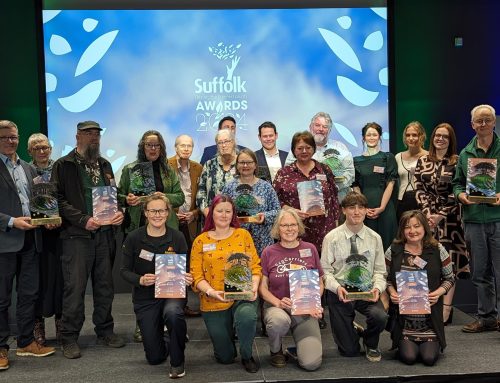[Source: Babergh and Mid Suffolk District Councils]
Pedestrian and pedal-power gears up next month, as councillors consider plans to improve the walking and cycling network across Babergh and Mid Suffolk in a bid to tackle climate change.
At cabinets next month (4 April), councillors at Babergh and Mid Suffolk District Councils are set to approve their first Local Cycling and Walking Infrastructure Plan (LCWIP).
The plan sets out the councils’ approach to improving and developing the local cycling and walking network across the district over the next 10 years, to support residents in shifting towards more sustainable transport.
It identifies almost 200 potential infrastructure improvement schemes across the two districts. These have been prioritised according to a variety of factors such as effectiveness, policy, economic factors and deliverability. This prioritisation will be key to obtaining local, regional and national funding towards improving sustainable travel facilities and routes in the districts.
In Babergh, examples of just some of the potential schemes include:
- improved pavements and segregated cycle path on the A131 near Bulmer Rd in Sudbury
- safer pedestrian and cyclists’ crossings at busy junctions on the A1071 in Hadleigh
- an off-road cycling route from Assington Thicks to create a route to Sudbury
In Mid Suffolk, examples of just some of the potential schemes include:
- improvements to Junction 49 roundabout to link with an existing cycle path in Stowmarket
- pedestrian access to schools and a new crossing on Church Road in Stowupland
- extending the footpath on Hoxne Road in Eye to connect it to other walking routes
This follows an extensive consultation in the summer of last year, which received more than a thousand responses, identifying where residents would like to see new or improved infrastructure.
Any new schemes would be delivered in partnership with Suffolk County Council, with the LCWIP enabling the councils to ensure local knowledge is at the heart of selecting and costing routes, and that they meet the needs and are in line with the visions for both urban and rural areas of Babergh and Mid Suffolk.
Creating an LCWIP also forms a key part and builds on the ambitions of several of the councils’ other strategies. Namely, their carbon reduction management plan, wellbeing strategy, and joint leisure, sport and physical activity strategy, which set out how the councils aim to support residents to lead active, healthy and more environmentally-friendly lives for years to come.
It will also ensure sustainable transport continues to be considered as part of future developments in the districts, and that Community Infrastructure Levy monies collected from developers are available for proposed initiatives.
Cllr Jessica Fleming, cabinet member for environment at Mid Suffolk District Council, said:
“I’m very pleased we’ve reached this exciting milestone in creating our first LCWIP. This is testament to everyone working together across the political divide, and thanks to the amazing response we had from residents during our consultation in the summer.
“Ensuring we can influence long-term sustainable transport plans for our communities is vitally important. Having this plan in place will enable us to work with Suffolk County Council to ensure active travel scheme best meet the needs of the district’s residents.
“Increasing access to well located, safe cycling and walking routes is a vital part of the Government’s transport strategy and approach to health and wellbeing. We are particularly interested in linking residents with schools and public transport and therefore reducing reliance on personal vehicles.”
Encouraging a more permanent shift towards sustainable transport, building on the significant number of people that either returned to or took up cycling during the pandemic, will be a key part of the districts’ Covid recovery.
Cllr Elisabeth Malvisi, cabinet member for climate change, biodiversity, and sustainable transport at Babergh District Council, said:
“We’re committed to helping make sure sustainable transport such as cycling, walking or public transport can be a more natural choice for our residents.
“We’re also keen to see an increase in the uptake of cycling and walking, with our residents and local businesses alike getting involved, to support Suffolk’s county-wide ambition to become carbon neutral by 2030 while improving health and wellbeing at the same time.
“By ensuring we’ve prioritised and indicatively costed the routes we can divert appropriate funding, such as through CIL, in order to secure local active travel initiatives – which demonstrates how development in our district can support our residents to lead bright and healthy futures.”
The LCWIP is set to be reviewed every three years. The councils have also produced a Vision for Sustainable Transport, providing the narrative and context for the LCWIP, and setting out the councils’ key priorities, and highlighting opportunities for active travel.
More information on how residents can improve their cycling skills and road safety awareness can be found on Suffolk County Council’s website






